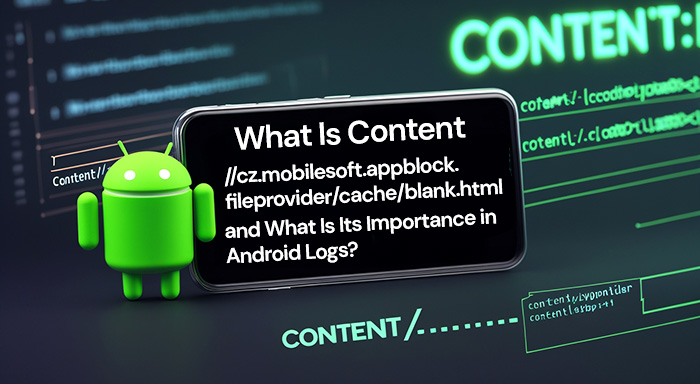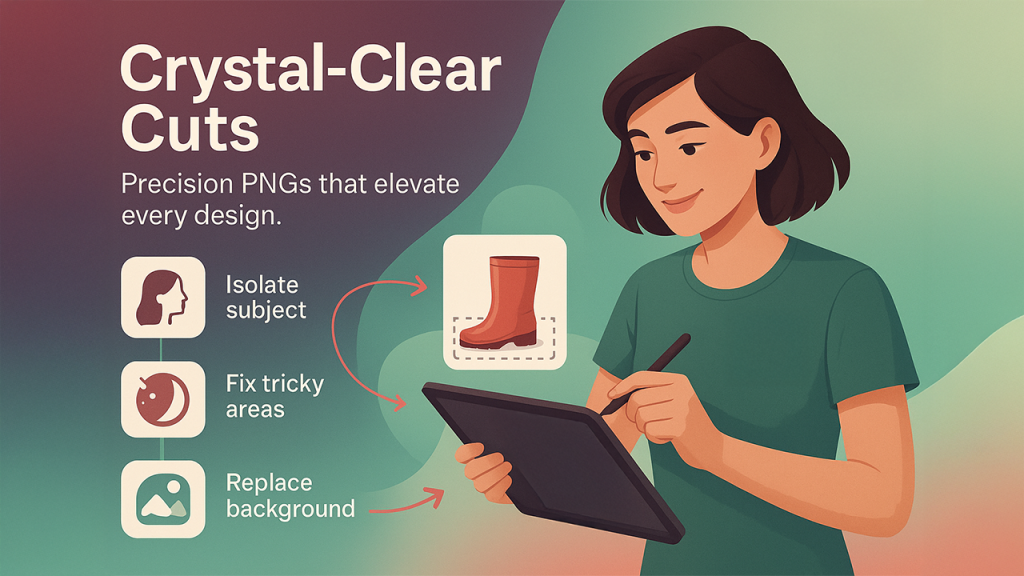If you are an Android user, you must have come across a mysterious digital address: content://cz.mobilesoft.appblock.fileprovider/cache/blank.html. It generally appears in your browser history, logs, or during debugging of the app.
If you are an Android user, you must have come across a mysterious digital address: content://cz.mobilesoft.appblock.fileprovider/cache/blank.html. It generally appears in your browser history, logs, or during debugging of the app. It is a URI, i.e., a Uniform Resource Identifier. Though it looks quite technical, it raises a lot of eyebrows and sparks a debate regarding what it implies and whether it creates any security-related concerns.
If you think this might be a dangerous file or a link left by a hacker, then you are wrong. It is a harmless URI that is a sort of an internal content URI system. It is especially used by a productivity app known as “AppBlock.” It helps with secure and efficient handling of blocked content. Let us delve deep into understanding the meaning and significance of this URI. We will see how it works and why it is an excellent example of Android’s security architecture.
Anatomy of Content URI: Understanding the Components
Before we start exploring this AppBlock URI, it is critical to understand what a content URI is and why Android utilizes it. In the context of the Android ecosystem, a content URI can be defined as a structured address that ensures secure accessibility to data handled by content providers. Contrary to conventional file paths, which reveal the internal storage addresses directly, content URIs serve as controlled gateways.
This system aligns with numerous vital purposes:
- Security: When you see it in other applications, it helps the system hide the precise file path.
- Sandboxing: It ensures strict isolation between external access and app data.
- Access Control: It provides permission-driven and temporary accessibility to specific resources.
When applications leverage content URIs, they are basically building a secure bridge that enables controlled sharing of data without impacting the underlying structure of the system.
Understanding the Significance of the URI Keyword: Unlock Its Meaning
This URI content://cz.mobilesoft.appblock.fileprovider/cache/blank.html commonly refers to numerous components of the Android operating system and the development of mobile apps.
- Content: It refers to data, files, or other details managed by the application.
- CZ MobileSoft: A mobile app developer excelling in security and productivity, best known for developing AppBlock.
- AppBlock: An Android app specialized in blocking distracting apps that aid users in managing their focus.
- File Provider: An Android system component allows for secure sharing of files between applications.
- Blank HTML: This is the real cached HTML file, generally containing minimum or no content, utilized as a placeholder.
When all these keywords are combined, either in the form of an internal process name or file path, they tell the complete details of the app that is managing its temporary files or local cache.
Also Read: High-Risk Merchant Account at Highriskpay.com: Is It Legit, and How to Apply?
Why does the URI Appears Like That?

The URI is not your ordinary web URL or file path of the system. If anything, it is a content URI for your Android applications showcasing all the internal files externally without exposing the path of the system directly. Let us understand the components of the URI one by one:
- Content://- It is an identifier that makes it clear that it is a content URI. The URI is managed by the Android’s secure ContentResolver system.
- CZ.mobilesoft.appblock.fileprovider—This can be referred to as the unique signature signifying the FileProvider of the AppBlock app. It is a gatekeeper that controls the access of the files.
- /cache/blank.html—It points toward a temporary cached HTML file existing inside the internal storage of the app.
In user-friendly language, the URI is a reference to a blank page that AppleBlock utilizes behind the scenes to handle blocked content or showcase placeholder pages.
When and where can you see this URI
If you have recently explored Android directories, you might have seen this content://cz.mobilesoft.appblock.fileprovider/cache/blank.html URI. You could have seen it in recycled logs or system cleaning applications. Often, you would also see this URI in the crash reports if there is an undetected issue with respect to content rendering or file management.
Experienced users or developers can explore Android directories as they work as an important resource for verifying app resource management or layout debugging. In such a case, you can get this URI:
- During Usage of AppBlock: When the app “AppBlock” redirects all the blocked websites to its internal web view.
- System Logs or App Debugging: Curious users or developers can find this URI in logs while tracking the behavior of the app.
- In WebView Caches: Apps leveraging WebView components generally leverage cached HTML files like the above URI to handle redirects or enhance load times.
Can This URI Be Threatening or a Matter of Concern?
No, the URI is absolutely not a matter of concern. When you see this URI, it does not imply that your device has now been hacked or an external source has gained access to your confidential information. Here are the things you need to know about this URI:
- It is a temporary or local file, which means that it is a region-specific link pointing toward a local storage.
- The URI does not share your sensitive files and information outside of your device unless you have explicitly granted access to a different app.
- It is an AppBlock feature that is purpose-built for redirecting or managing web access.
- Thus, despite its mysterious look, it is not an indication that your device has been accessed in an unauthorized way.
The following table lists out some of the common questions you might have regarding this URI.
| Question | Answer |
|---|---|
| Does the URI indicate unauthorized access? | No |
| Is the URI an indication of malware or spyware? | No |
| Can other applications access the URI? | No, if you have not shared access explicitly. |
| Is it an AppBlock feature? | Yes |
| Should the URI be deleted? | There is no real need, as the system automatically manages the caches files. |
A Short Note on AppBlock
MobileSoft develops applications for Android platforms to ascertain productivity, and AppBlock is one of them. This application ensures the digital well-being of the users and improves productivity by blocking particular websites, apps, and notifications for specific time frames. Focus modes, scheduling, and application analytics are some of the key features offered by the application.
The blank file of AppBlock is created by the application itself and is utilized to store the logs and schedules of the user. By utilizing the accessibility services of Android, restriction content APIs, and virtual private networks, it can operate in the background. The app can restrict distractions, access particular apps, or utilize notifications.
Since the app handles the restrictions and supervises the app’s use, it is safe to assume that it manages the background data of the app it is accessing. The background data includes logs, temp files, schedules, and in a few cases, data from web browsers, and a few data files.
Why the AppBlock Utilizes the HTML File?
Whenever an app such as AppBlock showcases web-driven elements such as a web view or interstitial message, it utilizes a blank HTML file as a template. This file is generally stored in the cache of the app to expedite access. This reduces the need for a quick network request while ensuring that the internal folder structure of the app remains hidden.
The reasons to choose a blank HTML file are as follows:
- Performance Optimization: Loading a cached local file is a lot faster than network requests.
- Smooth User Experience: There will be no error pop-ups or abrupt crashes.
- Minimized Frustration: Users realize that they have a gentle block instead of a technical failure.
- Visual Consistency: It maintains total visual consistency in the design language of the app.
Conclusion
Thus, as the blog suggests, the URI: content://cz.mobilesoft.appblock.fileprovider/cache/blank.html is a feature rather than a bug. It does not indicate malicious software, threats, errors, or anything dangerous. Instead, it is a harmless method of how applications such as AppBlock create restrictions on distracting content without impacting the overall user experience. It showcases how apps are developed with a user-centric mindset, ensuring both user productivity and securing Android systems.
FAQs:
Q. What is a URI?
A- The full form of URI is Uniform Resource Indicator and can be defined as a string of characters that recognizes a resource on the web or another network such as file, app, webpage or even a conceptual object.
Q. Why is this for content://cz.mobilesoft.appblock.fileprovider/cache/blank.html URI present in the cache file?
A- Cache directories are purpose-built for temporary data. This URI uses a blank HTML file as a template, which can essentially work as a placeholder for web content, a temporary loading page, or a beginning point for dynamically created HTML content within the app.
Q. Is this content URI dangerous?
A- No, the URI is quite harmless and does not pose any risks.
Q. What is the use of this URI?
A- This URI basically refers to a blank page, which is ultimately used by the AppBlock app to effectively and securely manage blocked content.
Q. Why are FileProviders and Content URIs important in Android?
A- They are both important in an Android system to ensure that file sharing happens in a secure manner.
Respond to this article with emojis






